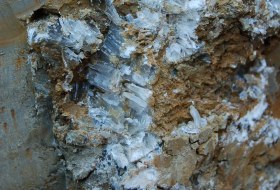Westhofener Aulerde
Once clay for potters, today premium wines for connoisseurs
Once again the Middle High German: "Ule" means pot. The site was first mentioned in a document in 1382 with the name "an Ule erden". Why pot? Because potters found clay there. Today, the clay marl should stay where it is. And that is below the vines! Just as well as loess and limestone. Top Rieslings grow here: ripe aromas and fine exoticism on the nose; creamy and opulent on the palate. Due to the southern exposure, the grapes ripen early. Hikers enjoy the multitude of vineyard houses.
> From Wingertshäuschen to Wingertshäuschen: https://www.rheinhessen.de/wingertsheisje-wanderweg
> In 1834, winegrowing pioneer J.P. Bronner described the Aulerde and the Kirchspiel as the best vineyards in Westhofen. https://www.vdp.de/de/die-weine/weinbergonline/lage/8079-kirchspiel#map-inline-target
> Rheinhessen blog: https://blog.rheinhessen.de/wanderbericht-westhofener-wingertsheisjerweg-rebenmeer-kommandozentrale-und-ein-liebesnest/
> To the other single vineyard sites of Westhofen: Brunnenhäuschen, Kirchspiel, Morstein and Steingrube



















































